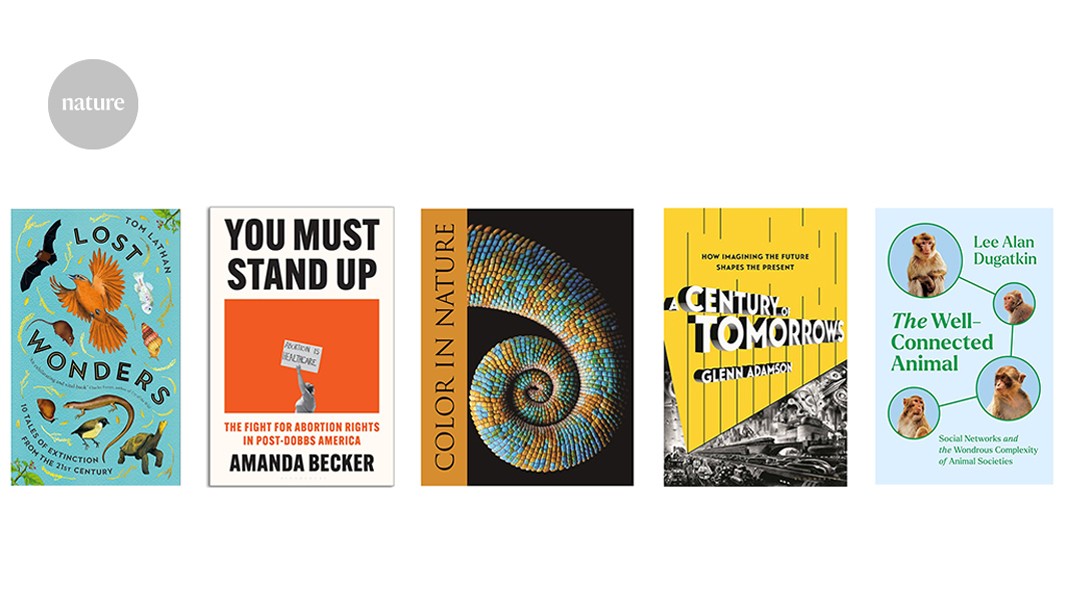Tech Stacks in 2025: What You Need to Know and Why It Matters
Let’s get real for a second: Technology isn’t just changing fast—it’s practically sprinting. If you’re not paying attention to emerging tech stacks in 2025, you’re running the risk of falling behind, whether you’re a developer, a business owner, or just someone curious about where the future is headed. But here’s the good news: Keeping up doesn’t have to feel overwhelming. In this guide, we’ll walk through what’s buzzing in 2025, break it down into manageable chunks, and give you practical advice on how to use this knowledge to your advantage. By the time you’re done reading, you’ll have a clear understanding of the tech stacks shaping the future—and actionable steps to make them work for you. Let’s dive in. Why Emerging Tech Stacks Matter in 2025 Before we get into the nitty-gritty, let’s set the stage. Why should you care about emerging tech stacks? Because they’re the building blocks of everything innovative happening right now. Think of them as the toolkits developers, startups, and enterprises are using to build the apps, platforms, and systems of tomorrow. Still not convinced? Here’s the deal: the tech stacks you embrace (or ignore) today will determine whether you’re ahead of the curve—or playing catch-up. And nobody likes to be the last one to the party, right? 1. The Rise of Polyglot Programming What It Is: Polyglot programming is all about using the right tool for the job instead of sticking to one language or framework. In 2025, developers are more comfortable blending multiple languages and frameworks in a single project. Why It’s Game-Changing: Imagine building a house with only one tool. Sounds ridiculous, right? The same logic applies to software. Using the right mix of languages and frameworks allows you to optimize performance, scalability, and user experience. Example in Action: Backend: Use Rust for its speed and memory safety. Frontend: Build with SvelteKit for faster rendering and smaller bundles. Database: Combine PostgreSQL for structured data with MongoDB for unstructured data. How to Adapt: Experiment with languages outside your comfort zone. For example, if you’re a JavaScript pro, try learning Go or Python. Start small—use a secondary language for a specific task like a microservice or a batch processing job. 2. AI-Powered Development Tools What It Is: AI isn’t just for chatbots or self-driving cars anymore. In 2025, AI-driven tools are making development faster and smarter by automating repetitive tasks, optimizing code, and even suggesting solutions in real time. Why It’s Game-Changing: Think of AI as your coding buddy who never gets tired. These tools help you focus on the creative, problem-solving aspects of coding while they handle the grunt work. Examples You Can Use: GitHub Copilot: Assists with code generation and suggests snippets as you type. Tabnine: An AI-powered autocompletion tool. DeepCode: Automatically identifies vulnerabilities in your code. How to Adapt: Start incorporating AI tools into your workflow now. Most have free or trial versions, so there’s no excuse not to try them. Don’t rely on AI blindly. Use it to speed up your work, but always double-check its suggestions for accuracy and context. 3. Edge Computing Meets the Cloud What It Is: Edge computing pushes data processing closer to the user instead of relying entirely on centralized cloud servers. In 2025, the lines between cloud and edge computing are blurring, creating a hybrid model that offers the best of both worlds. Why It’s Game-Changing: This isn’t just a buzzword—edge computing reduces latency, enhances user experiences, and cuts costs. Imagine a video streaming platform where buffering becomes a thing of the past. That’s the power of processing closer to the user. Examples in Action: Content delivery networks (CDNs) like Cloudflare. IoT devices running real-time analytics on the edge. AI models deployed directly on user devices. How to Adapt: Explore edge-first frameworks like Cloudflare Workers or AWS Lambda@Edge. Rethink your architecture. Identify parts of your app that can run closer to the user to improve speed and reliability. 4. The JavaScript Ecosystem Keeps Expanding What It Is: JavaScript has been around for decades, but it’s showing no signs of slowing down. In 2025, frameworks like Next.js, Svelte, and Solid.js are leading the charge in frontend development. Meanwhile, Deno is challenging the dominance of Node.js in the backend. Why It’s Game-Changing: These tools are faster, leaner, and more developer-friendly than ever. Plus, they make it easier to build apps that work seamlessly across devices. What to Watch: Next.js 14: Enhanced for edge rendering and serverless functions. SvelteKit: A simpler, faster alternative to React. Deno: A secure runtime for JavaScript and TypeScript. How to Adapt: Pick a framework

Let’s get real for a second: Technology isn’t just changing fast—it’s practically sprinting. If you’re not paying attention to emerging tech stacks in 2025, you’re running the risk of falling behind, whether you’re a developer, a business owner, or just someone curious about where the future is headed. But here’s the good news: Keeping up doesn’t have to feel overwhelming. In this guide, we’ll walk through what’s buzzing in 2025, break it down into manageable chunks, and give you practical advice on how to use this knowledge to your advantage.
By the time you’re done reading, you’ll have a clear understanding of the tech stacks shaping the future—and actionable steps to make them work for you. Let’s dive in.
Why Emerging Tech Stacks Matter in 2025
Before we get into the nitty-gritty, let’s set the stage. Why should you care about emerging tech stacks? Because they’re the building blocks of everything innovative happening right now. Think of them as the toolkits developers, startups, and enterprises are using to build the apps, platforms, and systems of tomorrow.
Still not convinced? Here’s the deal: the tech stacks you embrace (or ignore) today will determine whether you’re ahead of the curve—or playing catch-up. And nobody likes to be the last one to the party, right?
1. The Rise of Polyglot Programming
What It Is:
Polyglot programming is all about using the right tool for the job instead of sticking to one language or framework. In 2025, developers are more comfortable blending multiple languages and frameworks in a single project.
Why It’s Game-Changing:
Imagine building a house with only one tool. Sounds ridiculous, right? The same logic applies to software. Using the right mix of languages and frameworks allows you to optimize performance, scalability, and user experience.
Example in Action:
- Backend: Use Rust for its speed and memory safety.
- Frontend: Build with SvelteKit for faster rendering and smaller bundles.
- Database: Combine PostgreSQL for structured data with MongoDB for unstructured data.
How to Adapt:
- Experiment with languages outside your comfort zone. For example, if you’re a JavaScript pro, try learning Go or Python.
- Start small—use a secondary language for a specific task like a microservice or a batch processing job.
2. AI-Powered Development Tools
What It Is:
AI isn’t just for chatbots or self-driving cars anymore. In 2025, AI-driven tools are making development faster and smarter by automating repetitive tasks, optimizing code, and even suggesting solutions in real time.
Why It’s Game-Changing:
Think of AI as your coding buddy who never gets tired. These tools help you focus on the creative, problem-solving aspects of coding while they handle the grunt work.
Examples You Can Use:
- GitHub Copilot: Assists with code generation and suggests snippets as you type.
- Tabnine: An AI-powered autocompletion tool.
- DeepCode: Automatically identifies vulnerabilities in your code.
How to Adapt:
- Start incorporating AI tools into your workflow now. Most have free or trial versions, so there’s no excuse not to try them.
- Don’t rely on AI blindly. Use it to speed up your work, but always double-check its suggestions for accuracy and context.
3. Edge Computing Meets the Cloud
What It Is:
Edge computing pushes data processing closer to the user instead of relying entirely on centralized cloud servers. In 2025, the lines between cloud and edge computing are blurring, creating a hybrid model that offers the best of both worlds.
Why It’s Game-Changing:
This isn’t just a buzzword—edge computing reduces latency, enhances user experiences, and cuts costs. Imagine a video streaming platform where buffering becomes a thing of the past. That’s the power of processing closer to the user.
Examples in Action:
- Content delivery networks (CDNs) like Cloudflare.
- IoT devices running real-time analytics on the edge.
- AI models deployed directly on user devices.
How to Adapt:
- Explore edge-first frameworks like Cloudflare Workers or AWS Lambda@Edge.
- Rethink your architecture. Identify parts of your app that can run closer to the user to improve speed and reliability.
4. The JavaScript Ecosystem Keeps Expanding
What It Is:
JavaScript has been around for decades, but it’s showing no signs of slowing down. In 2025, frameworks like Next.js, Svelte, and Solid.js are leading the charge in frontend development. Meanwhile, Deno is challenging the dominance of Node.js in the backend.
Why It’s Game-Changing:
These tools are faster, leaner, and more developer-friendly than ever. Plus, they make it easier to build apps that work seamlessly across devices.
What to Watch:
- Next.js 14: Enhanced for edge rendering and serverless functions.
- SvelteKit: A simpler, faster alternative to React.
- Deno: A secure runtime for JavaScript and TypeScript.
How to Adapt:
- Pick a framework to specialize in, but stay open to others. If you’re deep into React, take a weekend to try Svelte or Solid.js.
- Stay updated. Follow the release notes for the tools you use so you’re never caught off guard by big changes.
5. Secure-First Development Is Non-Negotiable
What It Is:
With cyber threats growing, security can’t be an afterthought. In 2025, the most successful developers and companies are building security into every layer of their tech stack.
Why It’s Game-Changing:
Ignoring security isn’t just risky—it’s reckless. Whether you’re running a small app or a massive platform, a single breach could cost you big time.
Practical Steps:
- Use tools like OWASP ZAP or Snyk to identify vulnerabilities.
- Implement strict access controls using tools like Auth0 or Okta.
- Make security reviews a routine part of your development process.
What’s Holding You Back?
Maybe all this sounds exciting but also... a little intimidating. You’re not alone. The truth is, keeping up with emerging tech stacks takes effort. But here’s a secret: You don’t need to learn everything all at once. Start with one new tool or concept. Get comfortable with it. Then move on to the next.
The key is consistency. Even 30 minutes a day spent exploring new technologies can add up to big results over time.
The Future Is Yours to Build
By now, you’ve got a clear picture of the tech stacks shaping 2025. The world of technology waits for no one, but you don’t have to feel left behind. Dive into polyglot programming. Experiment with AI-powered tools. Push the boundaries of what’s possible with edge computing.
And remember: It’s not about being perfect—it’s about being curious and taking that first step. Whether you’re a seasoned pro or just starting out, the tools to shape the future are in your hands.
So, what are you waiting for? Get out there and build something amazing.
Earn $100 Fast: AI + Notion Templates
Do you want to make extra money quickly? This guide shows you how to create and sell Notion templates step by step. Perfect for beginners or anyone looking for an easy way to start earning online.
Why Download This Guide?
- Start Making Money Fast: Follow a simple process to create templates people want and will buy.
- Save Time with AI: Learn to use tools like ChatGPT to design and improve templates.
- Join a Growing Market: More people are using Notion every day, and they need templates to save time and stay organized.
Includes Helpful Tools:
- ChatGPT Prompts PDF: Ready-made prompts to spark ideas and create templates faster.
- Checklist PDF: Stay on track as you work.
What’s Inside?
- Clear Steps to Follow: Learn everything from idea to sale.
- How to Find Popular Ideas: Research trends and needs.
- Using AI to Create: Tips for improving templates with AI tools.
- Making Templates User-Friendly: Simple tips for better design.
- Selling Your Templates: Advice on sharing and selling on platforms like Gumroad or Etsy.
- Fixing Common Problems: Solutions for issues like low sales or tricky designs.
Who Is This For?
- Anyone who wants to make extra money online.
- People who love using Notion and want to share their ideas.
- Creators looking for a simple way to start selling digital products.
Get your copy now and start making money today!













![AI Reality VS Speculation with Google Machine Learning Engineer Jiquan Ngiam [Podcast #156]](https://cdn.hashnode.com/res/hashnode/image/upload/v1737151884317/c5b49f86-1f4a-45fd-bf2f-48ed084c1762.png?#)











.jpg?width=1920&height=1920&fit=bounds&quality=80&format=jpg&auto=webp#)



















































